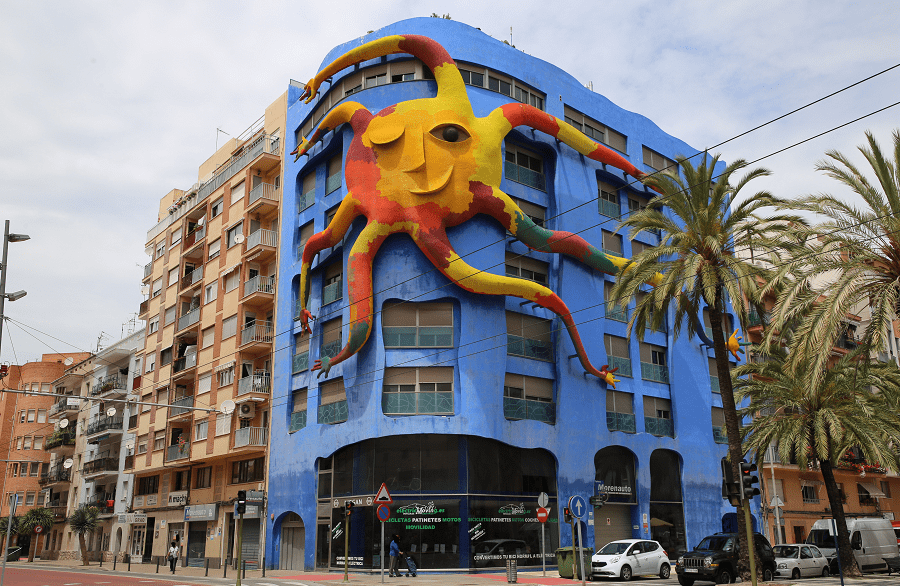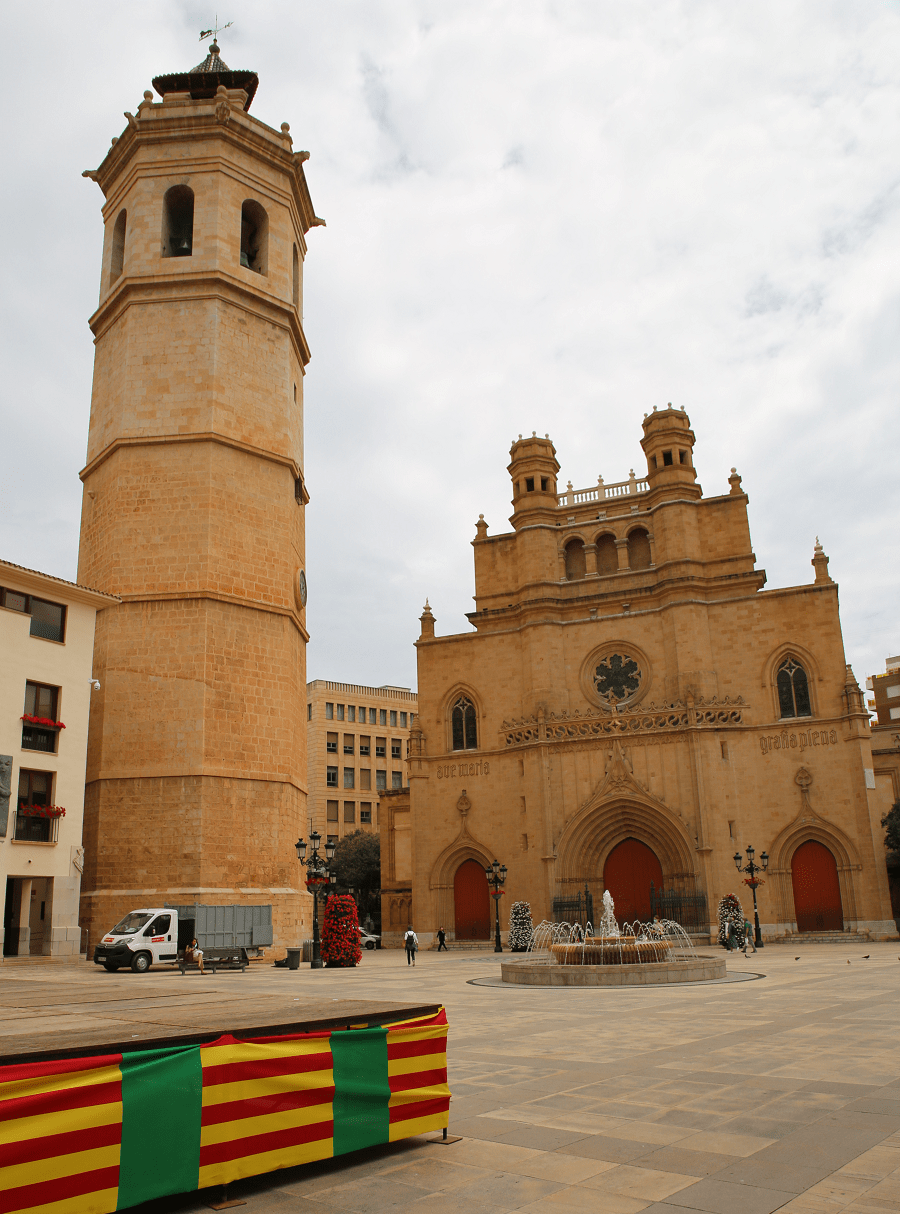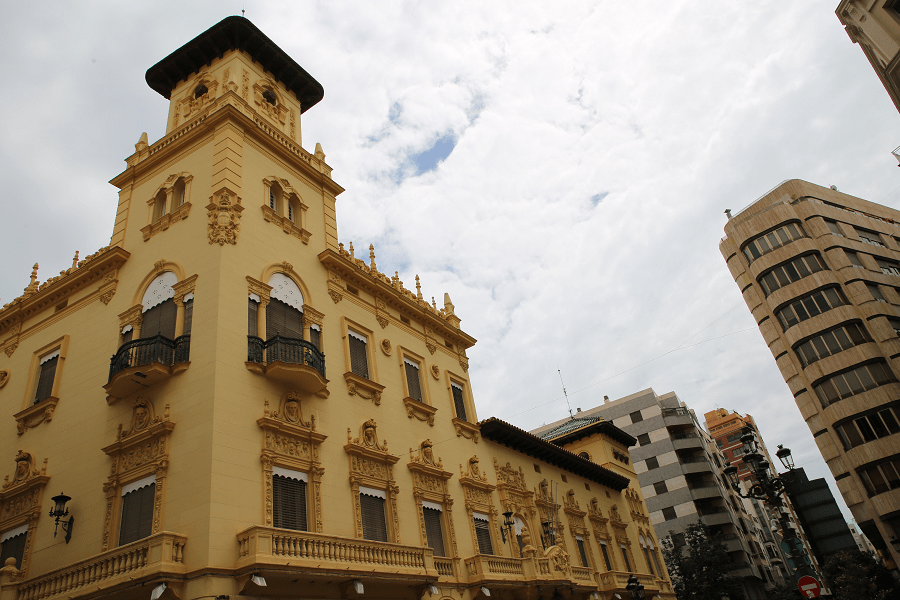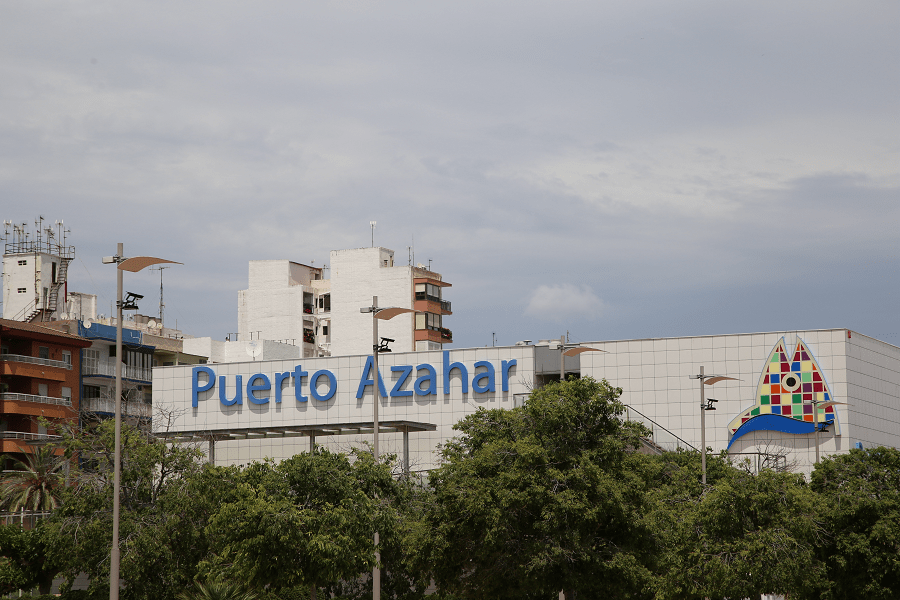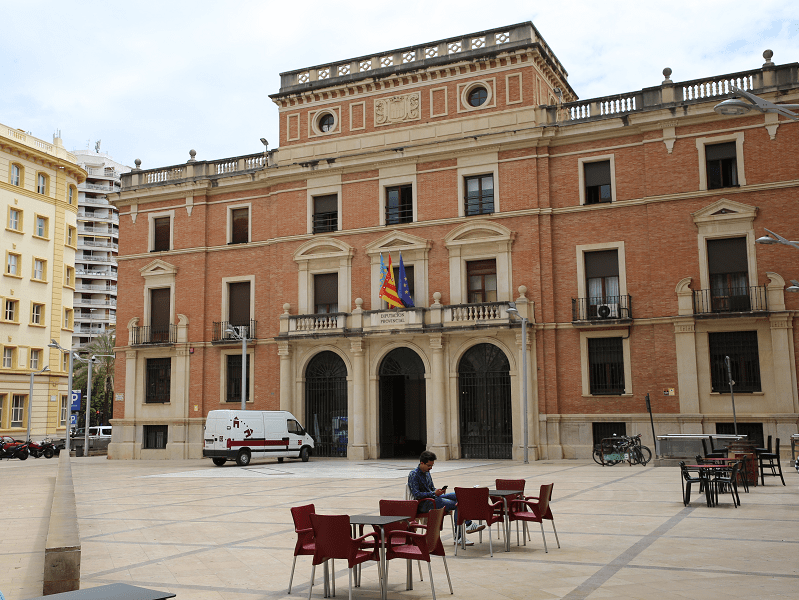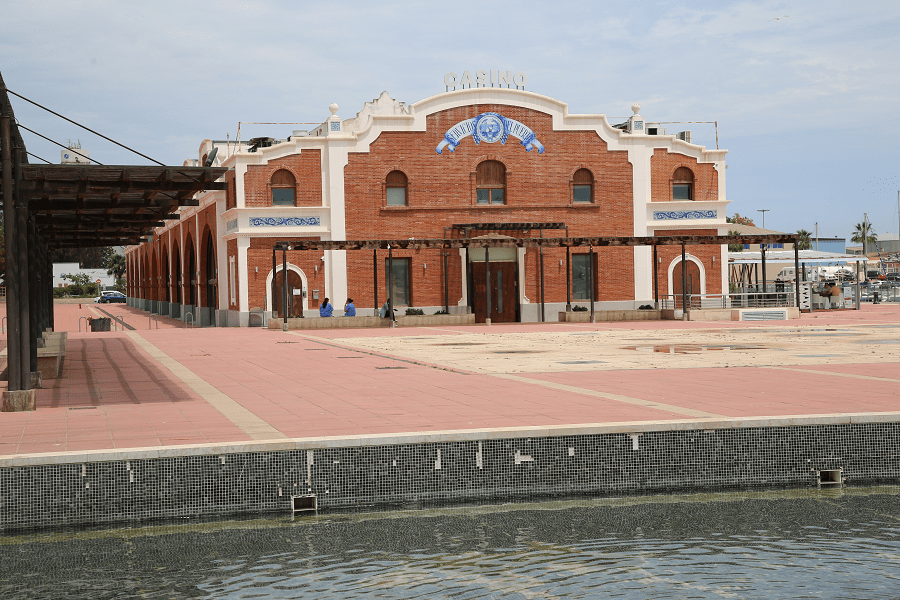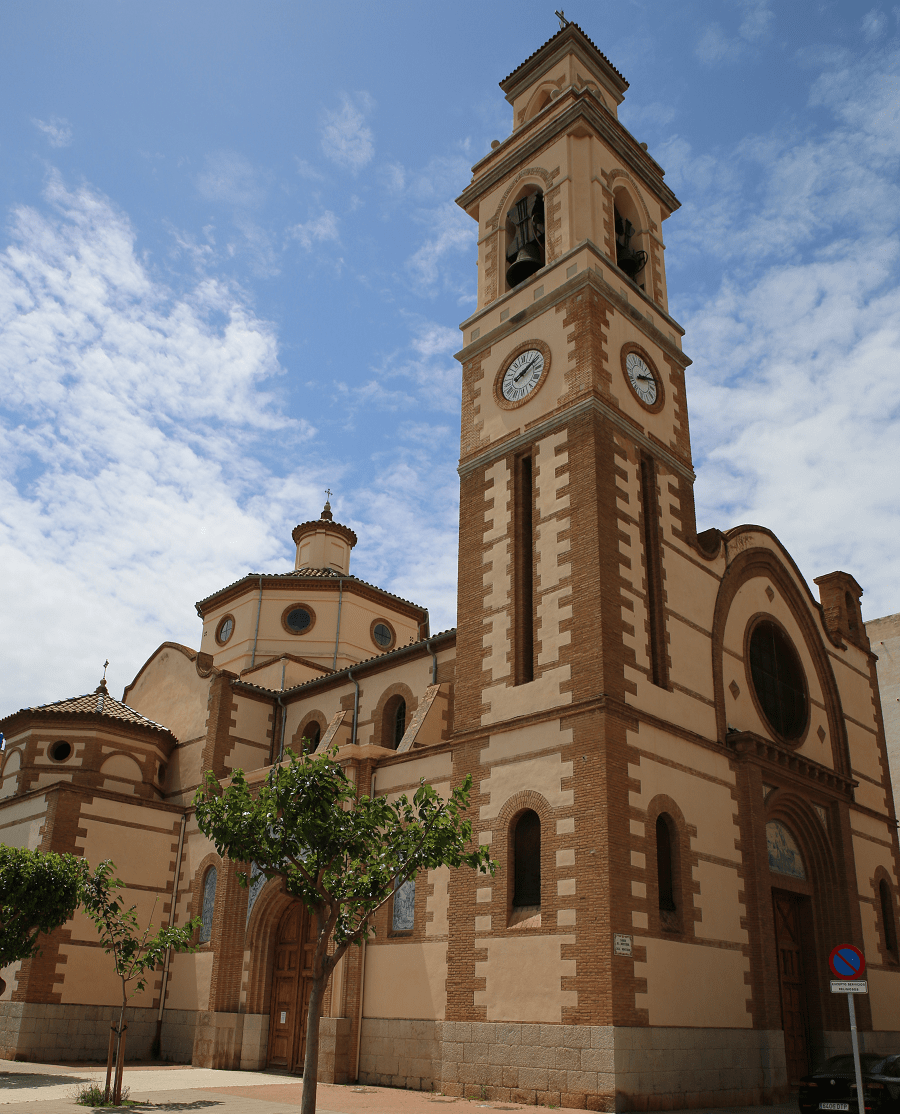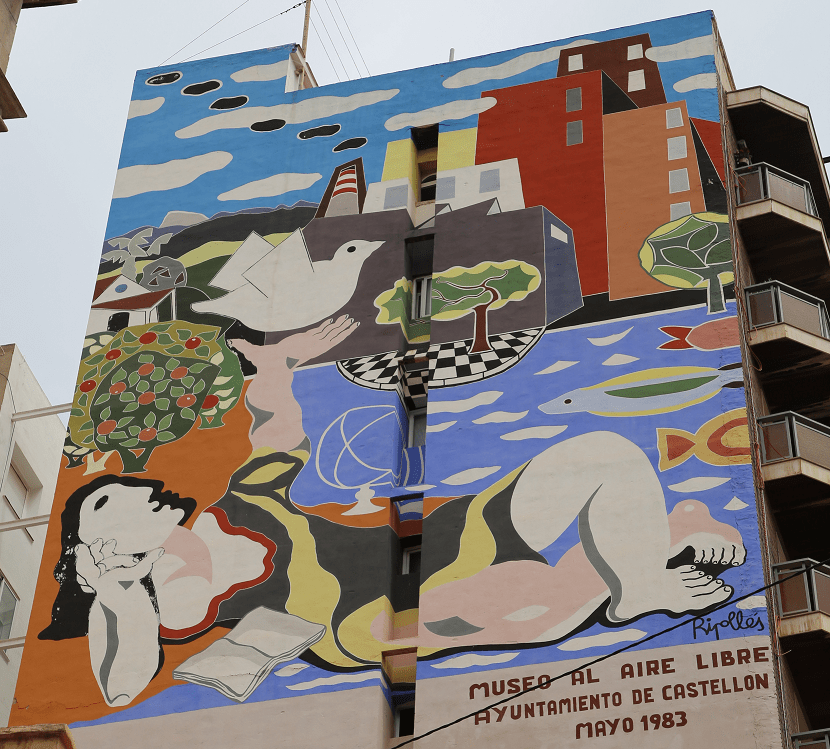Castellón de la Plana, or simply Castellón or Castelló, is the capital city of the province of Castellón, in the Valencian Community (Spain). It is located in the east of the Iberian Peninsula. The mountain range known as Desert de les Palmes rises inland north of the town.
It’s a popular part of the Costa del Azahar of the Mediterranean resorts of Spain.
The main urban nucleus is located about 40 m above sea level and about four km from the coast. The Prime Meridian, or Greenwich Meridian, intersects the 40th parallel at Castellón de la Plana and is commemorated with a monolith in Meridian Park (Parque del Meridiano) located at the exact point where this occurs.
Castellón, according to the INE, is the fourth city of the Valencian Community by number of inhabitants, distributed in two urban centers.
Until the year 1252, its inhabitants lived in the Cerro de la Magdalena , moving to La Plana the same year thanks to the permission granted by King Jaime I of Aragon. This is the date of the founding of the city, an event that is still remembered. On this day, the city celebrates the holiday of Magdalena, declared in 2010 as a festival of international tourist interest.
Among the significant events that have occurred over more than 750 years of its existence, there are:
The signing of the Castellón Rules governing the use of the Valencian language (1932),
The creation of the University of Jaime I (in 1991),
The celebration of the 2008 Special Olympics,
The international golf tournament Castelló Masters Costa Azahar, belonging to the PGA European Tour.
The local economy is based on industry, tourism and craft-work.
Tourism and main attractions
Concatedral de Santa María. The first church was built in the late 13th century, which was destroyed by fire. In the mid-fourteenth century, work began on the new church, which was demolished in 1936. The current temple occupies a complete block together with the parochial dependencies, the clergy’s houses and the cathedral dependencies.
Features of the architecture: the transept ends with a dome, and the sanctuary with a pentagonal apse. The naves are covered with a ribbed vault. 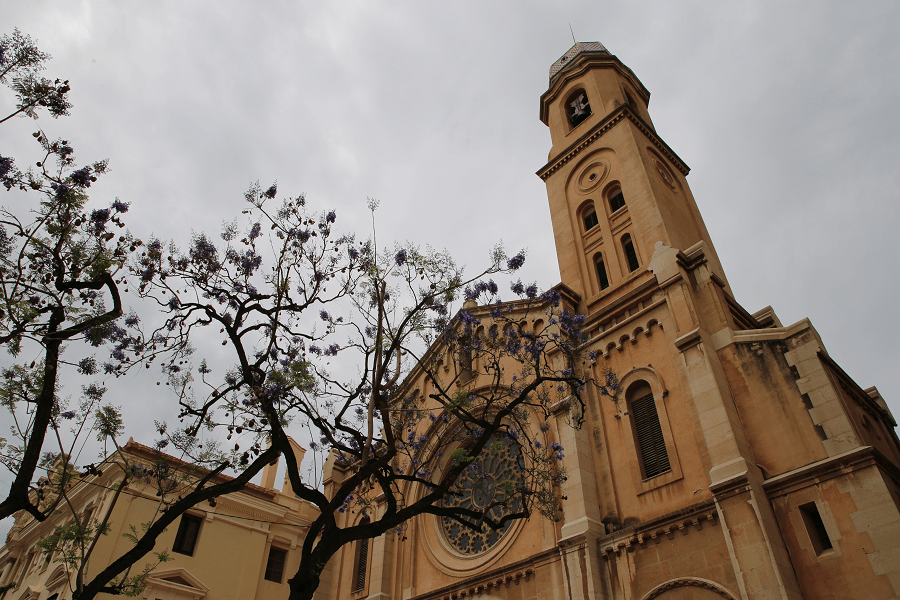
Basilica of Our Lady of Lidón. The current temple, completed in 1768, is located on the place of previous ones that existed at least since 1379. Baroque in style, it is composed of a nave with chapels. The portal dates from 1572. In 1940, reconstruction works began to repair the damage suffered during the Civil War. The temple was declared Minor Basilica in 1983 by Pope John Paul II.
Palacio Episcopal. Construction began in 1793 at the expense of Bishop Fray Antonio José Salinas y Moreno, commissioning the works to Miguel Tirado. It is a rectangular building. Outside, the façade is rectangular in composition structured in four sections. The mezzanine and the first floor have segmented arch balconies, separated by a stone cornice. The building ends with a parapet with pediment.
The bell tower Fadrí. The decision to build the construction was made in 1437, but work began only in 1440. It is a freestanding octagonal bell tower with a height of about 60 meters. It is divided into four parts: a clock room, a church prison, a bell ringer’s room and a bell tower. The tower, built in 1735, ends with a spire – an exact copy of the original destroyed in 1656.
Fadri is the symbol of Castellón and is located in the main square of the city. The bell tower is the only thing left from the original ensemble of the church of Santa Maria of the 16th century. The fact that the bell tower is located far from the church is the main distinguishing feature of this architectural structure, because, as a rule, the bell tower is part of the cathedral. Therefore, the tower received the nickname “bachelor”.
The town hall was opened in 1716. This is a detached building of rectangular shape. The first floor has five semicircular arches, pilasters and Tuscan capitals. There are also three balconies.
Lonja del Cáñamo. It was built in the first third of the 17th century, by Francesc Galiança. It is a quadrangular building with two arches supported by columns. On the second floor there are rectangular windows. There is a balcony. The facade is painted with allegorical paintings.
Jaume I University acquired the building in 1999 and transformed it into a cultural and educational center.
Post office. Work by Demetrio Ribes in 1917 . Completed in 1932. It has three floors, the facade is made of bricks, ceramics and glass.
Old Casino. The main façade was built in 1922 by Francisco Maristany y Casajuana.
There are many metal monuments in the city.
Museums
The planetarium is equipped with a Carl Zeiss projector. It opened in 1991. It has four exhibition halls, both temporary and permanent, and a complete calendar of astronomical observations. It holds conferences.
The Museum of Fine Arts, opened in 2001, houses a permanent collection of archaeological, ceramic, ethnological and artistic works by Castellón artists from different backgrounds, as well as works from private collections and even from the Prado Museum.
Since its opening in 1999, the contemporary Art Space has hosted various exhibitions of contemporary art, music and feature films.
The Ethnological Museum, since its move to Calle Caballeros, has been an example of the city’s typical culture, urban planning and traditional life.
The Military History Museum, located in the old Tetouan XIV barracks, has more than 3,000 pieces including uniforms, maps etc.
The recently inaugurated Museum of the Sea, offers a permanent exhibition with 274 pieces, including navigation equipment, maps, fishing utensils, boats etc.
Shopping
The main shopping area is the old town.
There are also four markets: the central market (Plaza Mayor), the St. Antonio market, the market on Mondays (all Mondays except holidays, 650 stalls) and the market on Fridays in Grau de Castello (all Fridays except holidays, 220 stalls).
Cuisine and restaurants
Rice is the main ingredient in many of the dishes that make up the local gastronomy. It is worth highlighting the paella (a typical family meal on Sundays and traditionally also on Thursdays), “arroz a banda” (where the rice and fish are eaten separately), rice soup, etc.
Fideuá is one more traditional seafood dish from the coastal areas of the Valencian Community.
Vegetables are the most important ingredients for “winter meals”. Olleta de la Plana is traditional as the ingredients always change.
Among the sweets it is worth highlighting “coca malfeta” or “coca de mida”. It has delicious lemon and cinnamon flavors and is very fluffy. The name changes depending on which area of the Valencian Community you are in. In the province of Valencia it is called “coca de llanda”, and in Alicante – “coca boba” or “coca secreta”.
There are two Michelin list restaurants in the city:
- ReLevante, Moyano 4, 23 – 44 EUR • Modern Cuisine
- La Llenega, Conde Noroña 27, 16 – 42 EUR • Modern Cuisine
Beaches
El Grao de Castellón (officially and in Valencian Grau de Castelló) is a district of Castellón de la Plana located four km from the city center.
Castellón has 10 km of coastline. The municipality has three beaches: Serradal, Gurugú and Pinar; the last two received the blue flag.
El Pinar beach, next to the Port of Castellón, with a length of 1750 meters and an average width of 90, has a promenade with artificial dunes.
The Gurugú beach, the next beach to El Pinar in the south-north direction, with a length of 1000 meters and an average width of 140.
Serradal beach, separated from Gurugú Beach by the mouth of the Seco de Borriol River, has a length of 1600 meters and an average width of 150 meters. Sports events are often held here.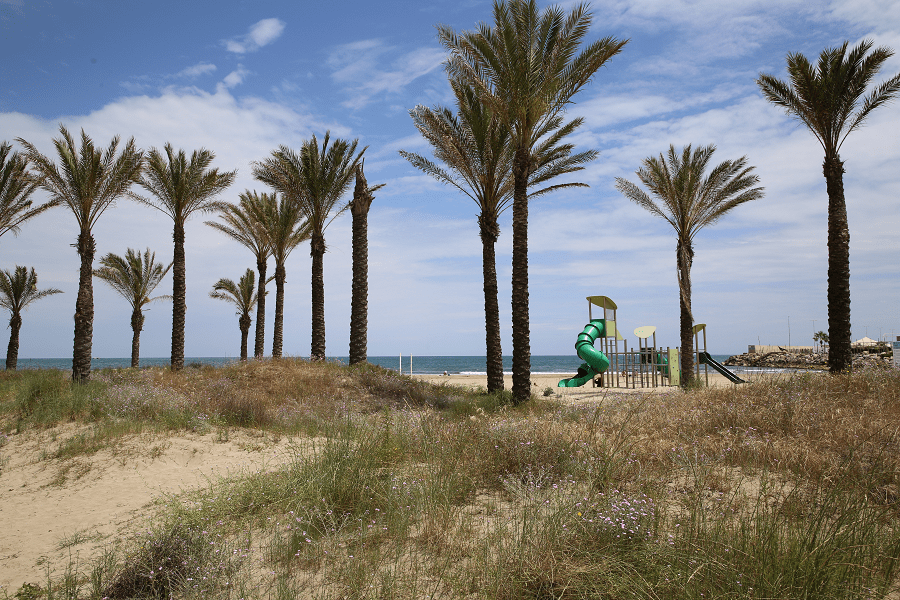
Transport
CS-22 highway connects El Grao with the Port of Castellón via N340. There are also two interurban roads that connect the capital of La Plana with the coast: they are Avenida del Mar and Avenida Hermanos Bou.
Line 1 of the tram-trolleybus connects to the city center.
There are two shuttle buses that connect the station in the city center with the beach in the pine forest and the Serradal road.
The small Castellón Airport offers charter and general aviation services, as well as scheduled passenger services to London, Bucharest and Poznań. The new Castellón-Costa Azahar Airport is designed to support large international jet flights and was completed in 2011.
Valencia Airport is about 70 km south, Alicante Airport is another 185 km further down the coast.
The city is served by the Castellón de la Plana railway station. The Euromed railway line links Alicante to Barcelona.
The has a new public transport called TRAM de Castellón which is a trolleybus. There is just a line Línea 1 (TRAM de Castellón), but authorities are planning to build the second line.
By car:
From Valencia 53 min (74.1 km) via V-21 and AP-7
From Madrid 4 hr (426 km) via A-3
From Barcelona 2 hr 58 min (291 km) via AP-7
Main information
Area: 107 sq. km (municipality)
Coordinates: 39°58′59″N 0°1′59″W
Population: 174 200 (municipality)
Languages: Spanish, Valencian
Currency: Euro
Visa: Schengen
Time: Central European UTC +1
See here best sea and ocean resorts of France and Spain (223 objects)





